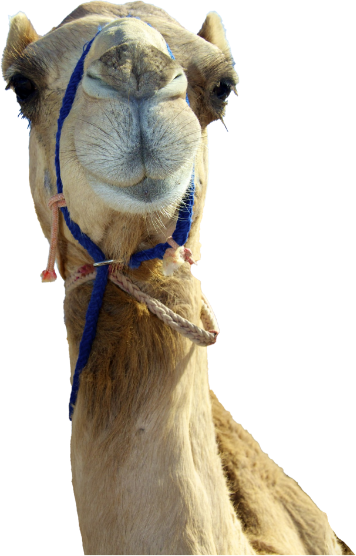
Empty Quarter
- Settlement: A handful on the outskirts
- Average annual temperature: 32°C
- Area size: 29.000 km²
Ar Rub' al Khali
Oman’s mesmerizing Empty Quarter, where vast expanses of towering sand dunes and rugged terrain stretch as far as the eye can see (and home to the world’s largest dunes). This remote desert, also known as Rub’ al Khali, beckons adventurers seeking an unparalleled wilderness experience.
Covering approximately 75,000 square kilometres in total and linking Oman, Yemen, Saudi Arabia and The United Arab Emirates. Oman’s portion of the Empty Quarter is a land of extremes, characterized by scorching temperatures and a lack of permanent settlements. Yet, amidst this harsh environment lies a beauty that captivates the soul.
Explorers flock to the Empty Quarter to witness its awe-inspiring landscapes and partake in activities like dune bashing and camel trekking. We like to offer our guests tranquillity, deafening silence and total disconnection from the outside world. Camping under the twinkling desert sky offers a chance to connect with nature in its purest form.
While the Empty Quarter may seem desolate, it is far from lifeless. Nomadic Bedouin tribes traverse its sands with large herds of camels (Black in this region), their ancient traditions intertwined with the desert’s timeless rhythms.
For those daring enough to venture into its depths, the Empty Quarter promises an unforgettable journey into the heart of Oman’s untamed wilderness.
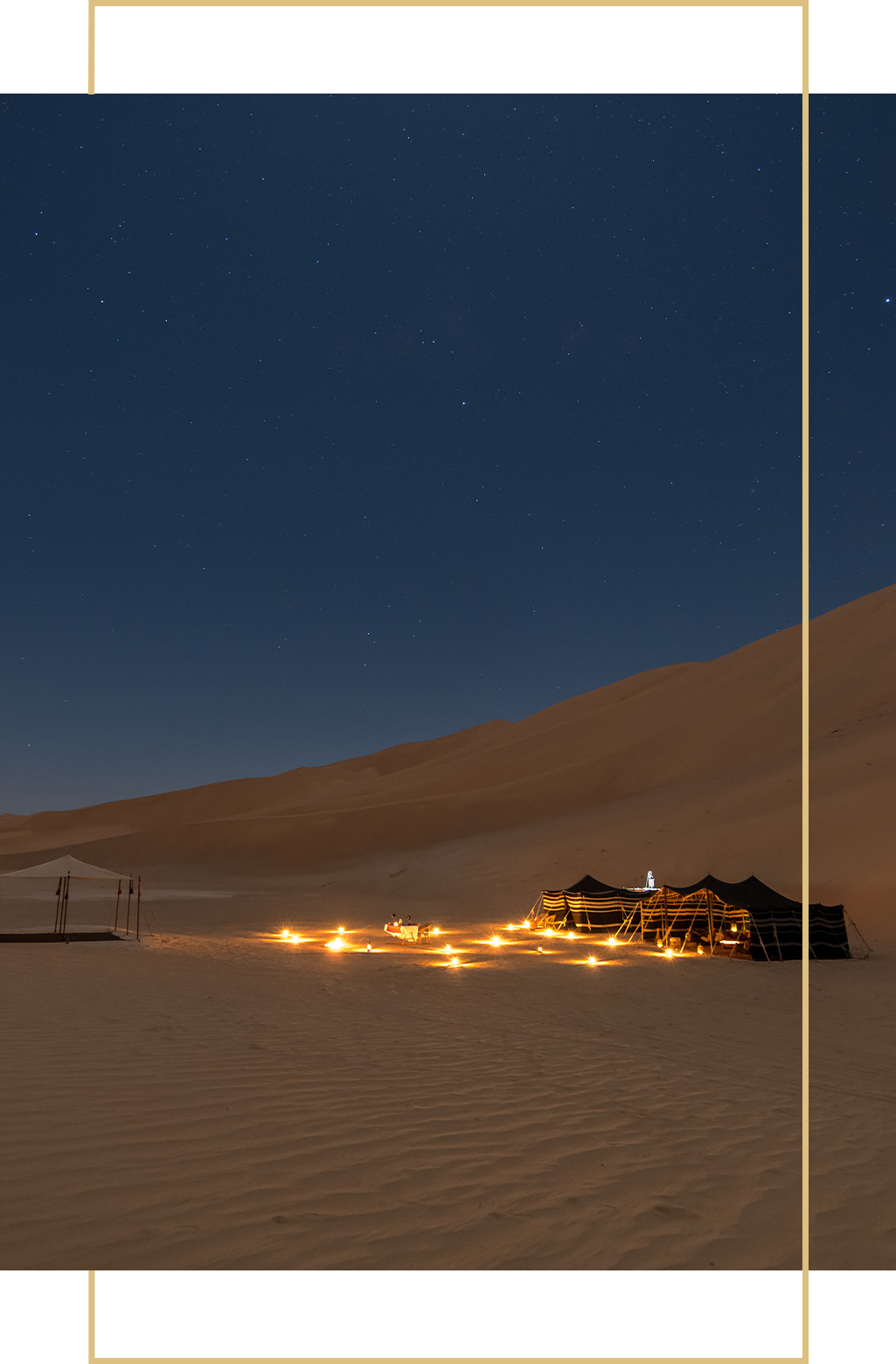
Wilfred Thesiger,
author
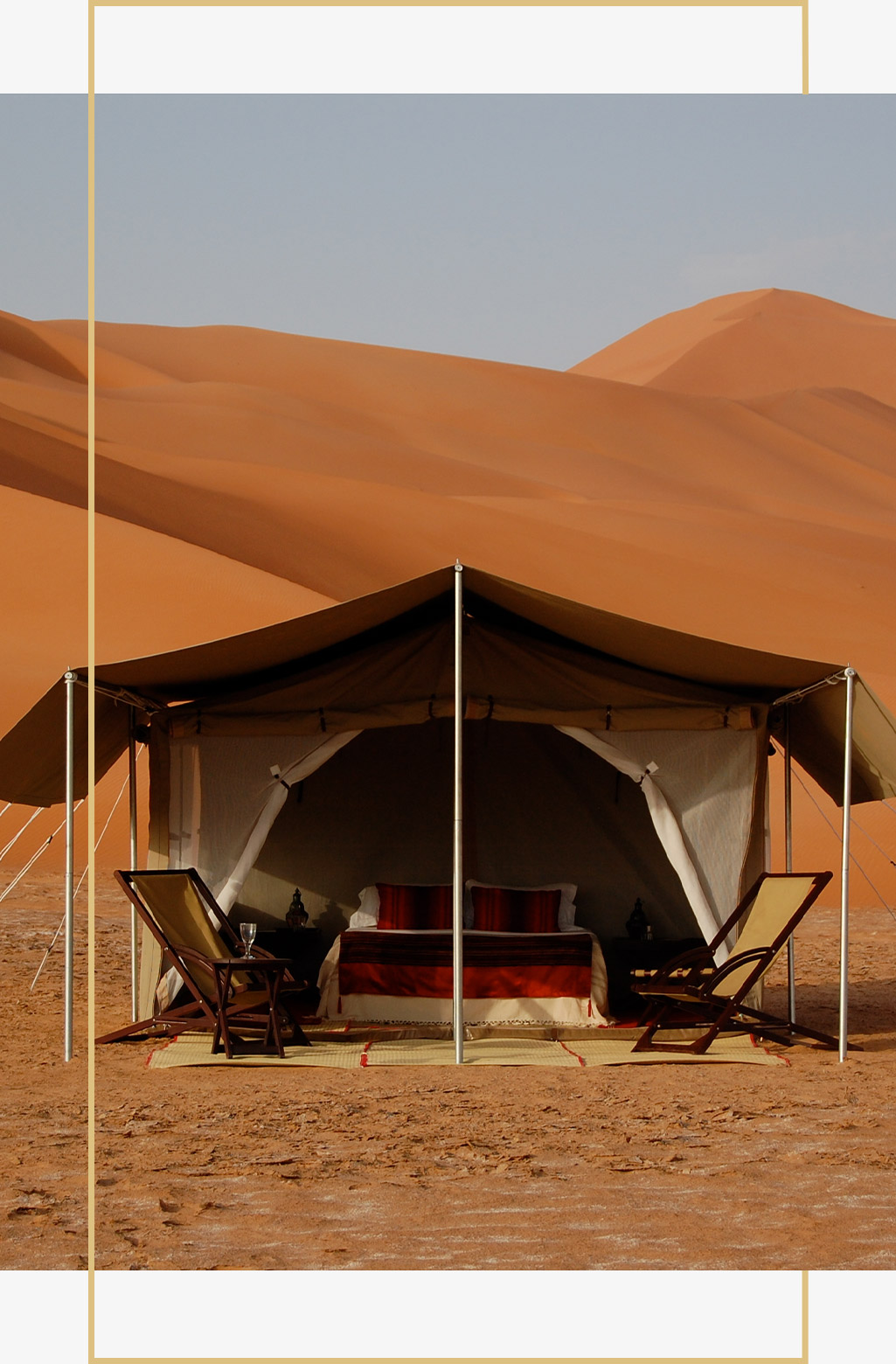
Getting to your private Hud Hud camp
We take the road up and through the Qara Mountains, making stops on the way to absorb the beautiful views of the mountains and wadis on our way through the rocky desert.
We stop at Wadi Dawkah, part of the UNESCO World Heritage Site “Land of Frankincense”. Wadi Dawkah is a major place where the frankincense tree (Boswellia sacra) can be found in large numbers and frankincense is harvested to this day. The incense comes from its gum, and it has been harvested and traded by Omanis for millennia.
After a delicious lunch at Thumrayt, we make a stop at another site of the Land of Frankincense UNESCO site, the caravan oasis of Shisr, where we visit the remains of what is believed to be the lost city of Ubar.
We then turn into an extremely remote and isolated area, where traffic is almost nonexistent. We leave the main track and weave our way through the grandeur of the russet red sand dunes of the Rub al Khali, the Empty Quarter. Our camp is set deep in the dunes and we arrive in time for you to explore your surroundings and take in the exquisite sunset.
Upon arrival at the private camp, you will be greeted by the Hud Hud team with cold flannels and a refreshing drink and given some time to settle in. Relax from the comfort of your tent, or in the majlis, and soak up your surroundings before enjoying a spectacular sunset view from the camp.
Enjoy some nibbles and drinks while our chef prepares a tasty freshly cooked dinner.
Following the dinner, take a walk among the dunes to marvel at the night sky or relax by the campfire.
Take a look at what else is possible during your trip to the desert.
Begin your journey now
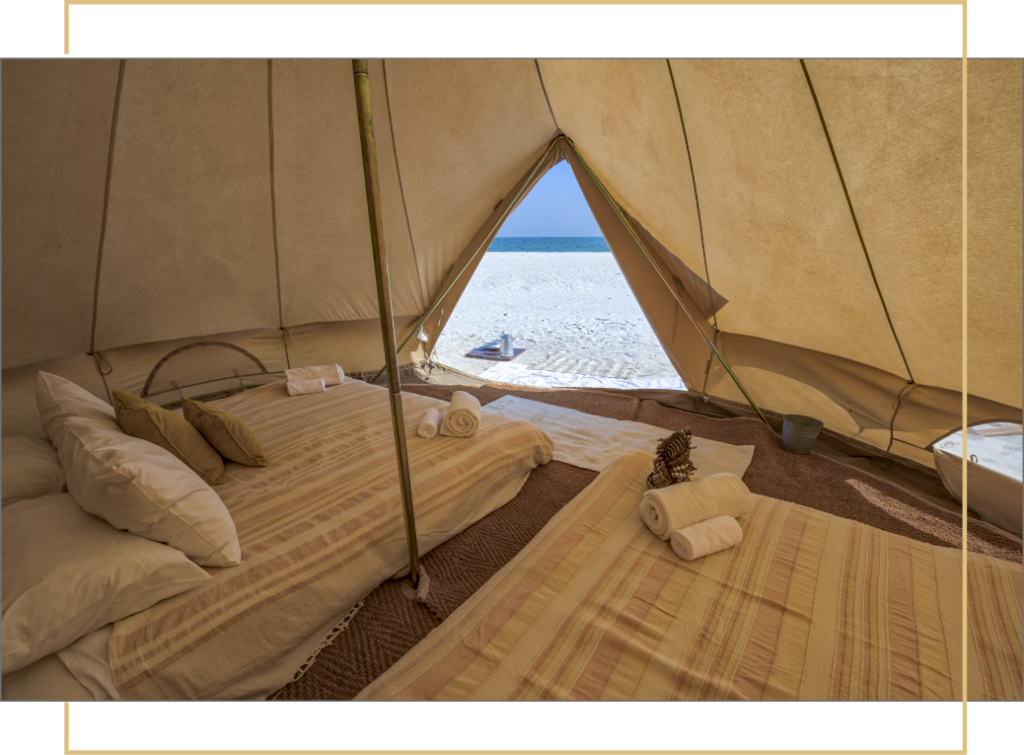
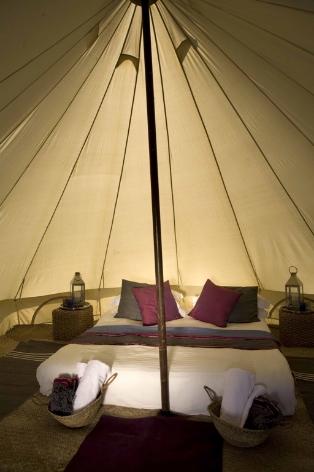

Not your usual camping experience
Our exclusive temporary settlements are reminiscent of a traditional, luxurious Arabian campsite. Each is created in Hud Hud’s unparalleled style, designed to meld into the natural environment and evoke the timeless ambience of the region.
Luxurious
Our Luxury camps offer lavish comforts amidst nature’s beauty, where every detail is meticulously designed for a sumptuous and unforgettable experience.
Great food
Great food experiences tantalize the senses, weaving a delightful narrative of flavours, aromas, and textures, creating memorable moments that linger long after the last bite.
Stylish
Nomadic-style tented camps are adorned with rich textiles and intricate details, blending traditional Bedouin elegance with modern sophistication.
Environment friendly
Our environmentally friendly camps harmonize opulence with eco-consciousness, offering a serene retreat where indulgence meets sustainability amidst Oman’s natural splendour.
Journeys
Other journeys in Southern Oman
At Hud Hud Travels we specialise in creating unforgettable journeys throughout Oman for single travellers, couples, families and groups.
